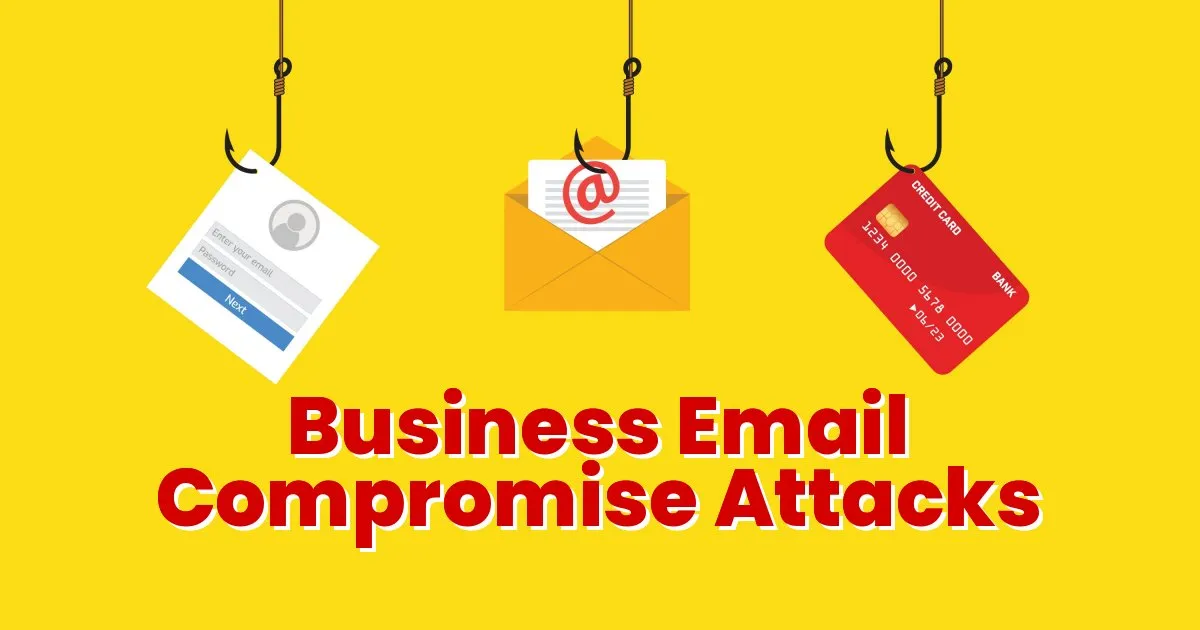What is Business Email Compromise (BEC)?
Business Email Compromise (BEC) is a type of cybercrime that targets businesses and organizations of all sizes by exploiting their email communications. In a BEC attack, cybercriminals use email to impersonate a legitimate company executive, employee, or partner to deceive others into taking harmful actions, such as transferring money, sending sensitive data, or performing actions that compromise the security of the company.
BEC attacks have become increasingly sophisticated, and they often go unnoticed for extended periods. This makes them one of the most dangerous forms of cybercrime today. BEC scammers rely heavily on social engineering tactics to manipulate victims, using various psychological methods to gain trust and exploit vulnerabilities.
How BEC Attacks Work
BEC scams typically involve the following steps:
- Reconnaissance: Cybercriminals gather information about the target company, including organizational structure, email addresses of employees, and business processes. This information is often acquired through phishing emails, social media profiles, or other public sources.
- Impersonation: The attacker then uses the collected data to craft convincing emails that impersonate high-ranking officials, such as CEOs, CFOs, or business partners. These emails may ask for financial transfers, confidential documents, or login credentials.
- Exploitation: The scammer either requests a wire transfer to a fraudulent account, seeks to steal sensitive data, or prompts the victim to take other damaging actions.
- Execution: The unsuspecting recipient follows the instructions, thinking they are complying with a legitimate request, and the scam is completed.
Types of Business Email Compromise Attacks
- CEO Fraud: Scammers impersonate the CEO or other executives, instructing an employee to wire money or share sensitive information.
- Invoice Fraud: A scammer poses as a vendor and sends fake invoices for payment, tricking accounts payable departments into transferring funds to fraudulent accounts.
- Account Compromise: Hackers gain access to a legitimate employee’s email account and use it to send requests or make fraudulent transactions.
Measures to Protect Yourself from BEC Attacks
While Business Email Compromise attacks can be highly sophisticated, there are several measures you can take to reduce your risk and protect yourself:
1. Enable Multi-Factor Authentication (MFA)
Multi-factor authentication adds an extra layer of security to your email accounts by requiring not only a password but also a second form of verification, such as a one-time password (OTP) sent to your phone or email. This makes it much harder for cybercriminals to gain unauthorized access to your accounts.
2. Verify Requests Through a Secondary Communication Channel
Whenever you receive a request for financial transactions or sensitive information via email, it is crucial to verify the request through another communication channel, such as a phone call or instant messaging system. This can help ensure that the request is legitimate and not a result of email spoofing.
3. Educate Employees and Partners
Human error is one of the biggest vulnerabilities in cybersecurity. Regular training for employees on how to recognize phishing emails, suspicious requests, and the importance of verifying requests before acting can significantly reduce the risk of a BEC attack. Encourage employees to always double-check any unfamiliar requests, particularly those involving financial transfers or sensitive information.
4. Use Email Filtering and Anti-Phishing Tools
Advanced email filtering systems can help detect and block malicious emails before they reach your inbox. These tools often use machine learning algorithms to identify and block spam, phishing attempts, and other malicious content. Consider using email security solutions that specifically target BEC threats.
5. Check for Email Spoofing and Domain Impersonation
BEC attacks often involve email spoofing, where the attacker’s email address looks identical or very similar to a legitimate business address. You can reduce the risk of email spoofing by implementing Domain-based Message Authentication, Reporting, and Conformance (DMARC) policies. DMARC helps authenticate your email and prevent unauthorized senders from impersonating your domain.
6. Regularly Update and Patch Software
Ensure that your email servers, operating systems, and security software are always up to date with the latest patches and security updates. Cybercriminals often exploit software vulnerabilities to gain access to email accounts and systems, so keeping everything updated reduces this risk.
7. Monitor and Audit Email Accounts
Constantly monitor your email systems for unusual activity, such as unauthorized logins, changes to email forwarding settings, or other suspicious behaviors. Regular audits can help detect compromised accounts early and prevent further damage.
8. Implement Strict Wire Transfer Protocols
Establish and enforce strict protocols for processing wire transfers within your organization. This could include requiring multiple approvals for transfers, especially for large amounts, and verifying transfer requests using multiple communication methods.
9. Use Encryption for Sensitive Information
When sending sensitive information through email, always use encryption to protect the data from interception. This helps ensure that even if a hacker gains access to your email, they will not be able to read or misuse the sensitive data.
10. Backup Data Regularly
Maintaining regular backups of your company’s data ensures that, in the event of a cyberattack or data breach, you can recover your important files without paying a ransom or dealing with significant data loss.
What to Do if You’re a Victim of BEC
If you believe your company has fallen victim to a Business Email Compromise attack, take immediate action:
- Notify your IT department or security team immediately to contain the attack.
- Contact the bank or financial institution to reverse any unauthorized transactions.
- Report the incident to law enforcement or the relevant authorities (e.g., FBI’s Internet Crime Complaint Center).
- Conduct a thorough investigation to determine how the attacker gained access and what information or funds were compromised.
Conclusion
Business Email Compromise is a growing threat to businesses worldwide, and the financial impact can be devastating. However, by implementing the right security measures, educating employees, and adopting good email practices, you can significantly reduce your vulnerability to BEC attacks. Stay vigilant, use modern security tools, and ensure that your team is always aware of the latest cyber threats to protect your business from falling victim to this type of scam.














